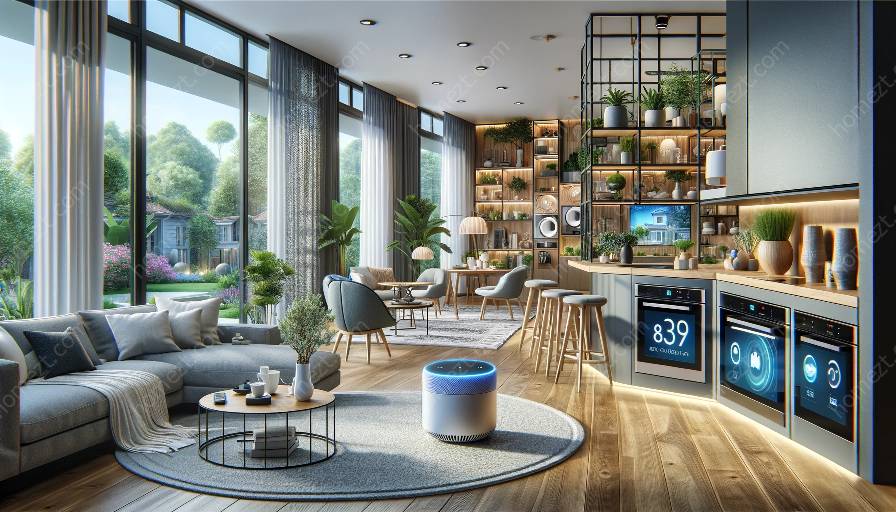Voice-controlled home appliances have become increasingly popular in modern homes, bringing convenience and efficiency to daily tasks. With the advent of Artificial Intelligence (AI), these appliances have taken a significant leap forward, offering advanced functionality and sophisticated interaction capabilities.
Understanding Voice-Controlled Home Appliances
Voice-controlled home appliances utilize natural language processing (NLP) and AI algorithms to understand and respond to voice commands. These appliances range from smart speakers and virtual assistants to connected devices such as thermostats, lights, and security systems. AI plays a pivotal role in enhancing the capabilities of these appliances, enabling them to learn user preferences, adapt to changing environments, and provide personalized experiences.
Enhanced Automation and Control
Integrating AI into voice-controlled home appliances allows for enhanced automation and control. With AI-powered voice assistants, users can remotely operate and manage various devices in their homes simply by issuing voice commands. For example, users can adjust the thermostat, dim the lights, or even brew a cup of coffee, all through seamless voice interactions.
Efficient Energy Management
AI brings energy management to a new level in intelligent home design. By analyzing patterns and user behavior, AI-powered home appliances can optimize energy usage, leading to reduced consumption and cost savings. For instance, an AI-enabled smart thermostat can learn the household's schedule and adjust the temperature settings accordingly, maximizing comfort while minimizing energy wastage.
Personalized User Experiences
AI's ability to learn and adapt enables voice-controlled home appliances to deliver personalized user experiences. These appliances can recognize individual voices, preferences, and habits, providing tailored recommendations and assistance. For example, a smart speaker powered by AI can offer personalized music playlists, news updates, and event reminders based on each user's unique preferences.
Advanced Voice Recognition and Natural Language Understanding
One of the most remarkable aspects of AI in voice-controlled home appliances is its advanced voice recognition and natural language understanding capabilities. AI algorithms continuously improve their ability to understand complex commands and context, making interactions with these appliances more natural and intuitive for users.
Integration with Intelligent Home Design
The integration of AI in voice-controlled home appliances aligns seamlessly with intelligent home design principles. Intelligent home design focuses on creating interconnected, efficient, and sustainable living spaces, and AI-powered appliances contribute significantly to realizing these objectives.
Seamless Connectivity and Interoperability
AI-enabled voice-controlled appliances thrive in an environment of seamless connectivity and interoperability. These appliances can communicate with each other and with other smart devices in the home, creating a cohesive and harmonious ecosystem. This interconnectedness enhances the overall functionality and convenience of intelligent home design, providing users with a truly integrated living experience.
Future Developments and Innovations
The application of AI in voice-controlled home appliances continues to evolve rapidly, presenting exciting possibilities for the future. As AI technologies advance, these appliances are poised to become even more intuitive, adaptive, and responsive, redefining the way we interact with our living spaces.
Conclusion
The application of AI in voice-controlled home appliances represents a pivotal advancement in intelligent home design, offering enhanced convenience, energy efficiency, and personalized experiences. The seamless integration of AI with voice-controlled appliances is reshaping the way we interact with our living environments, and the future holds boundless potential for further innovation and progress.


